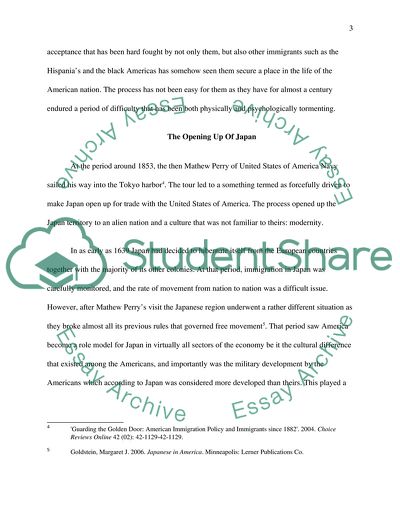Cite this document
(“History of U.S. Immigration Policy Japanese Migrants from 1868 to 1988 Essay”, n.d.)
History of U.S. Immigration Policy Japanese Migrants from 1868 to 1988 Essay. Retrieved from https://studentshare.org/history/1702515-history-of-us-immigration-policy-japanese-migrants-from-1868-to-1988
History of U.S. Immigration Policy Japanese Migrants from 1868 to 1988 Essay. Retrieved from https://studentshare.org/history/1702515-history-of-us-immigration-policy-japanese-migrants-from-1868-to-1988
(History of U.S. Immigration Policy Japanese Migrants from 1868 to 1988 Essay)
History of U.S. Immigration Policy Japanese Migrants from 1868 to 1988 Essay. https://studentshare.org/history/1702515-history-of-us-immigration-policy-japanese-migrants-from-1868-to-1988.
History of U.S. Immigration Policy Japanese Migrants from 1868 to 1988 Essay. https://studentshare.org/history/1702515-history-of-us-immigration-policy-japanese-migrants-from-1868-to-1988.
“History of U.S. Immigration Policy Japanese Migrants from 1868 to 1988 Essay”, n.d. https://studentshare.org/history/1702515-history-of-us-immigration-policy-japanese-migrants-from-1868-to-1988.


